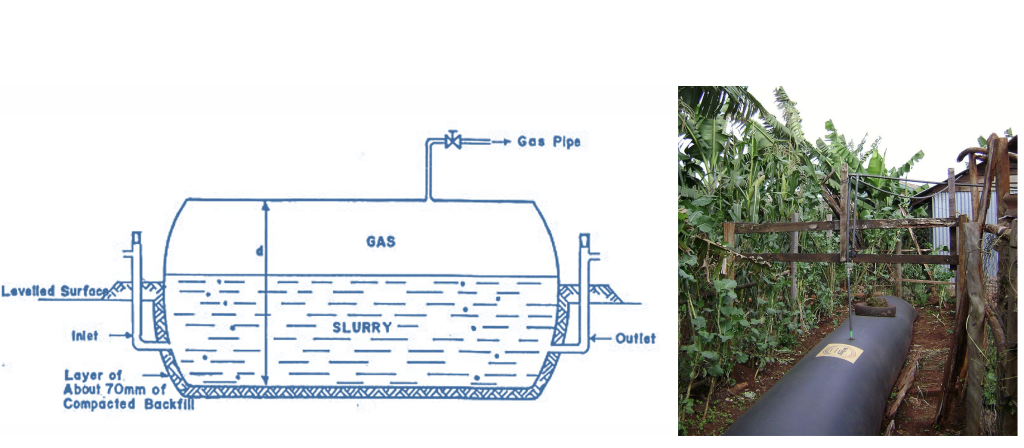2.3.3 Balloon-Type Digester

A balloon biogas digester is a weather-resistant plastic or rubber bag with a long shape. It serves the dual purpose of functioning as a digester and a biogas holder, storing the gas in the balloon’s upper portion. The inlet and outlet connections are directly attached to the balloon’s surface. This digester effectively prevents short-circuiting, allowing the digestate to flow through the reactor in a plug-flow manner.
To increase gas pressure, weight must be placed on the top of the balloon. Notably, balloon-type biogas solution offers a cost-effective approach and is suitable for areas with high groundwater tables or rocky ground because of shallow below-ground installation. To enhance longevity and reduce vulnerability to mechanical damage, it is advisable to consider utilising UV-resistant and reinforced plastic balloons. These reinforced balloons have the potential to last up to 10 years, providing a more durable and reliable solution.
The table highlights the pros and cons of balloon-type digesters.
| Pros | Cons |
|---|---|
| Easy to understand and operate | Relative short lifespan |
| Prefabricated and low-cost | Susceptibility to mechanical damage |
| Increased digester temperature in a warm climate | Susceptibility to temperature fluctuations |
| Easy to transport and install | Special knowledge and expertise might be required to repair a balloon digester |
| Uncomplicated emptying and maintenance | Low gas pressure requires extra weight or a gas pump |
| Suitable for areas with high groundwater tables and/or rocky ground | Requires space |
| The system is moveable, especially suitable in the context where permanent construction is not permitted | |
| Adopted from: (Vögeli Y., 2014), (GTZ ) | |
For further information, please click on the Materials tab at the top of the page.
Further reading:
- Low-Cost Polyethylene Tube Digesters (Link)
